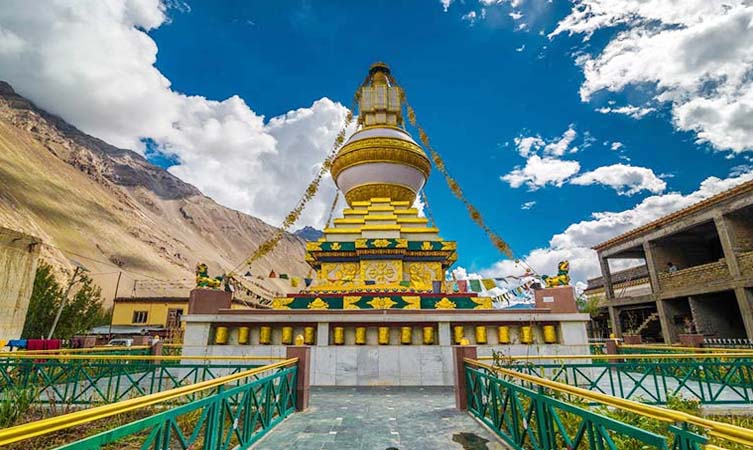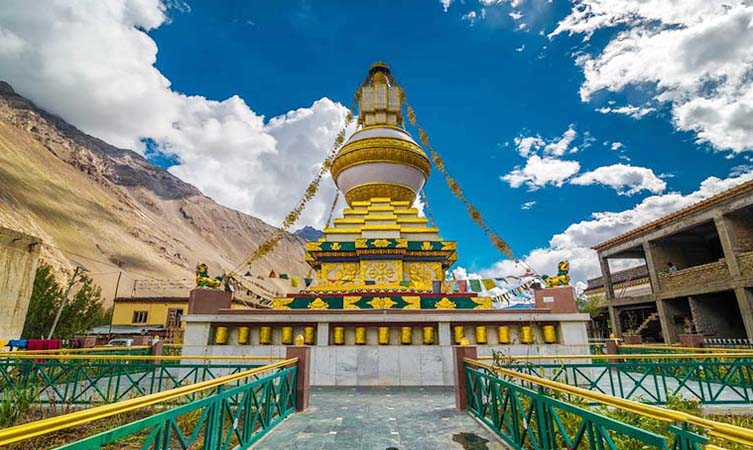As you enter Tabo village, there’s a stillness in the air — the kind that instantly pulls you back in time. Nestled at 10,000 ft, along the banks of the Spiti River, Tabo Monastery doesn’t just appear — it emerges from the landscape, made of the same earth and silence. Founded over a thousand years ago in 996 AD, it holds the distinction of being one of the oldest continuously functioning Buddhist monasteries in India. Its age is not a number here — it’s something you feel as soon as you step inside.

Unlike the towering white monasteries of Spiti that sit perched on cliffs, Tabo sits low and humble, almost hiding in plain sight. But inside its mud-brick walls is a world of exquisite detail — nine temples, fresco-covered walls that tell entire stories without a single word, and centuries-old paintings that seem untouched by time. The entire complex feels like a living museum, but one where people still pray, live, and pass on their knowledge.
Lamas often walk silently across the courtyard, prayer flags flutter in the dusty breeze, and a sense of timeless devotion wraps around you. It’s no wonder His Holiness the Dalai Lama chose Tabo as a site for his Kalachakra teachings in 1983 and again in 1996 — the place holds something beyond history; it holds presence. In a world moving ever faster, Tabo stands still. And in that stillness, it reveals something deep, ancient, and profoundly human.

